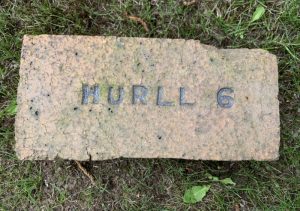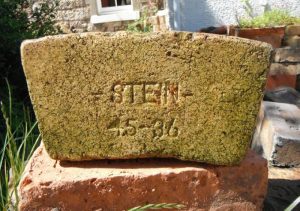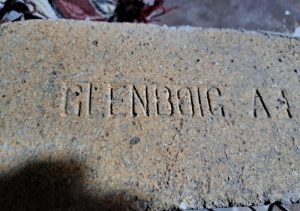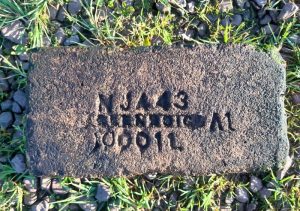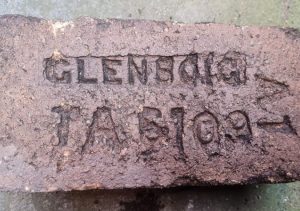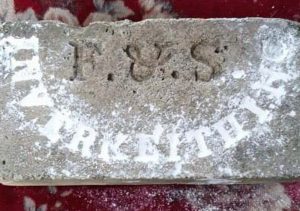Scottish refractories – some tales of the early days By J. McWilliam, director, United Fireclay Products Ltd.
This is the story of the beginning of the important Scottish refractories industry and of some of the events which influenced its growth. It does not pretend to be a history. A history would be much more comprehensive, incidentally, such a work would be extremely interesting – and not only as those working in the industry – but it is now doubtful that it will ever be written.
The reader may conclude that what follows reports to be a biography of James Dunnachie who merits much more scholarship than is present here. It just happens that he was an extremely important force in the growth of the industry.
The story is designed to provide a little novelty in that it at be somewhat different from the admirable but sometimes dry technical articles which (rightly) populate institute journals and the like.
In the latter days of the 18th Century in a small Glen in North Lanarkshire stood Castle Inchnook the house of the Forsythes of Dyke. In common with most Scottish castles and large family houses of the time, it’s siting was influenced by considerations of safety. This safety was provided to a certain extent by the boggy nature of the terrain around – a lot of moss.
Castle Inchnook stood on the Inchnook dolerite escarpment near Peterhead of this mossy Glen – bog Glen – Glenboig.
When a village was established close to the castle it was not called by this name. It was most certainly called Garnqueen. This name survives in the part of the village which lies in the parish of Cadder and the signal box at the Glenboig rail junction is also Garnqueen.
There are so many stories relating to activity at a point near to the reported site on Inchnook Castle. Horse-drawn carts were driven to the encampment and loaded with ‘clay’ dugout with pick and shovel. A date given is about 1820 but the ‘clay’ was interglacial clay (not the Glenboig clay) and was used for the manufacture of roofing tiles at a small works very close to a place called Leckethill.
The Glenboig clay outcrops close to the Inchnook position and Fireclay mines operate close to this point for many years following the principle that drift mines are driven near to the outcrops. One such mine was called Inchook.
There is evidence to show that the manufacturers of firebricks began some 4/5 miles west of Garnqueen at Cardowan Fire-clay (Garnkirk nearby) in 1833/34, near to the village of Gartcosh, but the record shows that in 1836 John Hillcoat was engaged in firebrick making at Garnqueen for Glenboig. In spite of the fact the Fireclay in the Gartcosh, Garnqueen and Cardowan area was somewhat inferior to that at Garnqueen, John Hillcoat could not have made spectacular progress because in 1880 some 24 years later, the population of the village was still only 120 but in this period it would appear that the village acquired a new name Glenboig which is rather unusual in that the village took the name of a product rather than the reverse. The name Glenboig came from the name of a farm on whose land the plant is built.
By the time a fair amount of information was beginning to be collected on the local clay seams which being named the Glenboig Series have then preserved the name in Geological Surveys of the area for all time.
About 1860 a firm named Messrs Thomson McLean & Company acquired the right to work the fireclay in the area and firebricks were beginning to be produced on a much larger scale. Meanwhile Messrs Hurll, Young & Company were operating at Heathfield and Cardowan Works, using the same seam of clay although somewhat higher in F2O, and lower in A1O1 and in 1865 this firm took over from Thomson McLean & Company.
This could be the first of several Scottish firebrick takeovers. Hurll, Young and Company carried on until 1874 when the partnership was dissolved. John Hurll acquired sole ownership of the Glenboig works while Young went back to Heathfield.
In this period land for some eight more years under the guidance of Hurll, and managed for a time by a James Dunnachie, the Glenboig works was extending and becoming the best-known firebrick concern in Britain with even then a market in many countries in the world. Meanwhile, new works had grown up in Glenboig, James Dunnachie who was a managing partner in Hurll and Young during its existence now reappears as the one who established the new firm – J&S Dunnachie and Company – and built Star Works literally across the road from John Hurll. For ten years those two carried on intense competition until in 1882 this bitter warfare (which no doubt had intensified with retelling many times) came to an end. Reason prevailed and in an amalgamation took place, completed in 1884 with the new company adopting the designation which is extent to this clay – a designation which, by the way has plagued a succession of sales managers and the like in its complete defiance of every attempt to anagram or in any other way to produce a good sounding brand name – The Glenboig Union Fireclay Co Ltd. However for many years Glenboig was enough. The Union obviously came from the amalgamation.
Even before this name Dunnachie was becoming increasingly well known. Many historians and contemporaries have criticised British entrepreneurs of the 1870-1914 period for lack of initiative and for poor performance (some are still doing so today), This may be true in some cases, but such an accusation could not be levelled at the Glenboig company and especially at James Dunnachie. Apart from the enterprise previously hinted very briefly, a remarkably vigorous policy of exporting was initiated which was to last, bearing fruit for 50 years. By 1884 Dunnachie was reporting on a visit to St Petersburgh and the connection so forged survived till after World War 11 (not 1-11). Markets were opened up in Antwerp, Sydney (Australia), Germany, Spain, China, India, USA, to name some and illustrate a fine selection of semi-Industrialised and industrial giants. Agencies were set up and regular visits were made. James Dunnachie became widely known as one of Britain’s most travelled industrialists having visited every part of Europe as well as North and South Africa, the United States and Canada-all this before 1800.
It may be gathered that Dunnachie was a strong character and he took the job of heading the new company like a duck to water. In 1882 the Glenboig Union Fireclay Company was registered as a private limited company with a share capital of £150,000 in £10 shares. The first list of directors included: John Hurll, Woodneuk, Lanark: James Beckett, merchant, Glasgow: James Dunnachie, Glenboig: James Grant, Glasgow: Wm Kennedy, Broxburn Oil Co Glasgow: Wm Ness, mining engineer, Glasgow: John Wilson, merchant, Hillhead, Glasgow, John Hurll was chairman, his son Peter Hurll, secretary, salary (£300/ per annum) and James Dunnachie, managing director.
This was a triumph for Dunnachie for in addition to receiving a salary of £600 per annum with free house and fuel, he was paid £20,000 plus 2d per 10% royalties for his three patents which became the property of the company.
Probably the most important of the patents sold to his company by Dunnachie was that for the Dunnachie Patent regenerative Gas Fired Continuous Kiln. Probably twenty sets of these kilns were built at Glenboig for their own use and some considerable publicity was given to the design. It became quite popular outside Glenboig, although in the same seventy-odd years of its range it became exceedingly unpopular within Glenboig from time to time as successions of works managers can still testify. In the 1880s, the Dunnachie kiln was earning more in the United States than the bricks themselves, which by the end of the decade, were selling in every corner of the world. In 1885, a Mr Hitchcock offered £1,200 for the exclusive rights to the use of the patent in Missouri, Kansas and Illinois, in 1890 Mr C Davies negotiated the building of Dunnachie kilns for Messrs Harbison Walker, of Chicago, at royalties of £150 per set. In the same year sets of kilns were built in New Jersey and a medal of the Dunnachie kiln were shown at a New York exhibition. At the time, the design was completely different from anything previously used and the fuel economy compared with hand/coal-fired intermittent and even the most efficient coal-fired continuous kilns of the time were real and quite substantial. When one examines the currently quite popular Dutch Vlamoven Type kilns of the 1970s, one is stuck with the similarity to the Dunnachie kiln of 1880.
Dunnachie himself was a striking figure. Of greater than average height with a reddish-brown flowing beard, he always wore a Glengarry bonnet. A drive-way ran from his house down through the plant to Glenboig station and each morning this was something of a ‘Royal’ procession of one, with the 8.15 train of workers touching the forelock as he passed by.
In this phase, Dunnachie built up quality and quantity to a spectacular degree and raised the reputation of Glenboig to probably the highest relative level in its history. It should not be thought that progress was made in a smooth calculated fashion: far from it. A better description would be turbulent. Even when the company reached the stage where customers gladly paid substantially higher prices to Glenboig than to any other manufacturer, the company encountered considerable trouble in curbing the efforts of competitors to climb on the bandwagon by advertising that their product was manufactured with Glenboig clay. One went so far to arrange that their postal address was Glenboig but the crowning aggravation was the case of the bricks manufactured in Germany and shipped from Hamburg and Antwerp to Black Sea ports bearing Russian characters which read phonetically Glenboig. Lawyers letters passed frequently and in goodly numbers. Not all of them were ignored. Such things kept the management busy but not too occupied to establish in 1901 the first laboratory in the firebrick trade with a chemist for prospecting and control work.
‘Gain Blue’ is a term which is still spoken with reverence in the village and it describes a Fireclay which came into use in large tonnages before the turn of the century. It was a remarkable clay which was really quite bright blue and resembled the well-known Missouri Flint clay in characteristics. With the Glenboig know-how and the clay fired harder than previously in the Dunnachie Kiln a product which became a standard for many years against which others were measured was produced. The British Admiralty specification of the time specified Glenboig or equal.
Unfortunately, geological troubles and inability to cope with them lost this clay to the company, well before it was worked out. This happened at a critical time in the history of Glenboig.
These were the golden years for craftsmen. The hand maker of the 1880s and ’90s was a proud man. Each morning his wife turned him out in Snow White shirt, cap and apron – more like a chef than a brickmaker. He took great pride in his craft and could be seen standing impatiently waiting for the kiln burner to pull down the wicket until he saw how a certain shape had turned out.
Such was the regard for the products of these men that when the practice of many years of the hand maker pressing his thumbprint into the brick was discontinued there was an avalanche of complaints. Cheap machine-made rubbish’ was freely quoted by customers who noted the absence of the thumbprint and for a short time, an indentation resembling a thumbprint was stamped along with the brand name on machine-made bricks. There are those still alive who give the lie to this story saying that the thumbprint was just rank bad brickmaking and would not be tolerated. Nevertheless, until recently examples of the machine-made brick with the ‘Thumbmark’ could easily be found-even today if a good search were made.
Work began at 7.00 am but quite regularly a brick-maker would be at his bench earlier than this. There was a break at 9.00 am for breakfast and the sons of these men used to vie with each other for the privilege of carrying the father’s breakfast to him. While he and the son tried his hand at ‘working’ with father criticising and encouraging greater effort. Justly proud men they were and in the village they ‘walked the crown of the causeway’.
A debt of gratitude is due to Mr J. Harold, a native of Glenboig, once an employee and later a student at Strathclyde University for the following information which formed part of a paper on Glenboig Union Fireclay Company 1882-1921. This paper is quite the best chronically of its kind encountered. Mr Harold unearthed a paybook used by James Dunanchie to keep a day-to-day record of his workers covering the period 1876-1891, 18 miners and 74 others were employed in 1879. Of the 74 others, there were 6 women, 14 boys and 5 tradesmen. There would probably also be some drawers in the mine but these were not paid directly by the firm. Some examples of hours worked and wages paid may be of interest.
In the fortnight ended 29 November 1897, a millman worked 137 ½ hours for £2 3s 6d-his rate being 3/2d per day. Another millman was paid 3/4d per day and worked 146 ½ hours for £2 9s 4d. A woman helped at the kilns for 1/10d per day working 132 hours for £1 4s 2d. A boy brick carrier or ‘bencher’ carried 23 950 bricks (almost 120 tons) from one moulder which earned him, with some extra work, a total of 17/4d.
Dunnachie’s total wage bill for the fortnight was £206 2s 0d. From the workers’ earnings, contributions were deducted for the doctor and the schoolmaster. In this particular fortnight, the doctor received 21/10d and the schoolmaster 35/4d. These gentlemen would, of course, receive income from other sources.
At the turn of the century, the population of the village stood at over 1 500. A large number of the adults worked in the fireclay industry in some of the companies in the district. Work was reasonably steady and the village moderately prosperous. In 1901 however, some event not recorded predigitated a strike’ to use a modern term. One cannot know how extensive the use of strikebreakers was in those days but other features of the Dunnachie character and the strong ‘master-servant’ relationship existing in the company suggested that this would be a natural reaction on his part to strike action.
A well-known strike-breaker named Scott Hunter was employed. Many a winter’s night has been whiled away in home and pub with stories of this remarkable man, and the story of the Glenboig strike in its entirety would make a novel in itself.
Scott Hunter was on the small side, square-built and immensely strong, even in middle age. As may be imagined, one who plied such a trade had to be rough and tough. Scott Hunter was adequately endowed with all the necessary attributes for his job. He offered a package deal taking over the running of the plant under the existing management supplying labour for all jobs.
He collected a squad-some say seventy strong-in Glasgow; Poles, Southern Irish and mostly Lithuanians-men and women. Mounted on a small white pony which was as tough as he was, he sat out for Glenboig at the head of his band of workers, walking behind- a twelve-mile journey-and arrived at the works through a gauntlet of jeering, brick throwing locals. These strikebreakers occupied the plant and ran it under the supervision of the management with Scott Hunter organising the food. When the day’s work was ended they all lay down ‘heads and tails’ in the ‘Victoria stove’ (which was a drying stove of the hot floor type) and so they worked and slept for some weeks. However, the restriction to the boundaries of the works began to be irksome, especially to the men who began to yearn for a visit to the village pub. When they finally ventured abroad, the villagers were waiting for them and a battle ensued between the locals and the foreigners with Scott Hunter pitching in in defence of his squad and the diminutive police force struggling to restore order.
Despite the obvious enmity existing during the strike several of the strike-breaking squad stayed behind when matters were settled and Scott Hunter led his squad back to Glasgow. Those who did stay behind were rapidly accepted by the community and respected as the good workmen they were. Their family names, somewhat boulderised with time perhaps are still to be found in the village but many moved to increase the fairly large Lithuanian community. In the Motherwell area. Names like Pottris, Linsky, Costello, Kinselle were strange sounding in a Scottish village.
In passing there is the authentic story of Wincas Pottris, a miner in the company who placed 2.3kg of gelignite on the hob of the fireplace in the house where he lodged (rented from P & M. Hurll) to soften, it being hardened by the cold weather. An explosion resulted which wrecked three adjacent houses, killing four people and injuring eight others. Wincas Pottris was virtually unharmed and when he was charged with culpable homicide he was found not guilty mainly on the grounds that it was normal practice to heat gelignite in order to soften it although this was usually done in the works. The jury recommended that the Glenboig Union Fireclay Co enforce more strict control on the handling of explosives and P. & M. Hurl claimed recompense from them for the houses. This claim was repudiated.
Those who died were all Lithuanian and a connection between the explosion and the departure of most of the families from the village has been suggested.
During the 1914-1918 war the resources of the industry were severely taxed, not at the beginning when activity was low and pay-offs were the order of the day but after when it was realised that ‘the war would not end by Christmas’ the national effort was reflected in increased business with 1917 peaking at £72,000 profit for the Glenboig Union Fireclay Co for example. In their case, however, a heavy toll was taken in plant and machinery and also in the mines where clay was extracted at a rate and in a fashion which had little thought for tomorrow. 1921 was a boom year for the refractories industry and Glenboig’s profits were the highest ever peace-time figures but it marked the end of an era for the company. James Dunnachie Snr dies on 8 January of that year leaving £19, 297 moveable estates which was less than he had been paid for his patents in 1882. He had spent sixty years at Glenboig and had made the company and with it the Scottish refractories industry world famous. There is no official monument of his service to the area, not even a street name. In 1950 a life-size portrait in oils was discovered at the back of an old mould store. This was cleaned up and hung in the technical department office at Glenboig for some time. It was learned that his daughter would appreciate having it so it was sent to her.
Fortune ceased to smile on Glenboig from then and the company was unable to cope with the depression from 1929. Two disastrous errors were made in order to secure a Russian order. Prices were cut severely and an eventual loss was made on the transaction. There are several stories associated with the Russian inspectors who almost lived in the works and haunted every operation in the manufacturing process. The ‘Glenboigers’, fiercely proud of their product resented this- and showed it in no uncertain manner.
The other case is a story in itself. A company, the Bussey Co. Was created to produce coke for the local blast furnaces etc, (there were six blast furnaces in the area at that time) on a site adjacent to the brickworks. Glenboig had a lot of money in this new venture. The Rt Hon J. H. Thomas (Jimmy Thomas) travelled in a special train from London to a point on the mainline directly opposite the new Bussey office door whence about a furlong of red carpet was laid to just below his carriage door. One can imagine the style with which ‘man o’ the people Thomas walked up the main to present the engine driver with a five-pound note. Everybody was invited to the opening, the champagne flowed free, the enterprise was accurately described as ‘launched’ and a good time was had by all. It is a matter of history what befell the Bussey Co. which went out of business is a remarkably short space of time taking a lot of Glenboig money – company and private citizens with it. The plant was taken over by the Scottish Gas Utilities Co. which promptly concluded an agreement with the Glenboig Company to supply the gas by-product from the American process as fuel for their kilns. Gas mains were erected and all the Dunnachie kilns were connected. This development represented a significant economy in firing costs but it did not last long. A recession in the iron market developed and the demand for coal disappeared. The stockpiles of coal increased rapidly and there were worries about the degeneration of the stock on exposure. But Scottish Gas Utilities were forced under contract to supply gas continuously to the Glenboig Company. What did they do? They fed the coke back through the plant and operated at higher temperatures. This produces a gas of sorts without making more coal. Glenboig who by now felt they were on the losing end of the deal were faced with a new type of fuel which incidentally was high in hydrogen and in their equipment had to be treated with great respect. They coped with the situation for a time but the gas became harder to handle and explosions were frequent. The rumour monger so swore that the coal was being passed through the plant yet another time. After a particularly bad explosion in the brickwork’s, an official of the Glenboig Company shut down the main valve thereby breaking a clause in the contract. There followed a long and expensive series of legal proceedings culminating in the House of Lords.
This was the second time in the history of the company that litigation in which they were involved went to the House of Lords. The first time was in 1908 where they contested with the Caledonian railway Co on a matter concerning Fireclay. This case is notable in that it contained the first legal definition of Fireclay as a mineral. The Glenboig Company won this case but lost in the case against the Scottish Gas Utilities Co.
Rival companies had been founded and steadily increased their competitiveness through the years. These had their powerful families, the Stains, the Turnbulls, the Griffiths, the Douglas and so on. The beginnings of these enterprises make great stories in themselves but the rise of Glenboig and its innings as leader was the significant factor in the development of the Scottish refractories industry.
In these days when the fashion is to aggregate into groups, little items which make up the history of the industry are liable to disappear because they are ever collected. In 1949 it was found to be surprisingly difficult. In the twenty-five years since several people have expressed their intention to write the history of the Scottish refractories industry. So far nothing has appeared. Perhaps this will rekindle enthusiasm and somebody will find the large gaps which lack of time and space make necessary in this case. In these gaps would be the fascinating details which would put flesh on the skeleton – the situation which resulted in the parting of Hurll & Young, the fortunes of the Hurll family, how James Dunnachie managed to build the new plant and ultimately emerge the major shareholder of the Glenboig Union Fireclay Co Ltd, his triumphs and heartbreak, the quarrel between Dunnachie and his foreman (also a shareholder) John G. Stein which resulted in the birth of John G. Stein & Co. The departure of Jas Dunnachie Jnr from his position as general manager bricks department of United Collieries Ltd. Armadale to take up the position of managing director on the retirement of his father, and all the kenspeckle figures who flitted across the stage in the 150 years. It would be a pity if this side of the history were lost.



